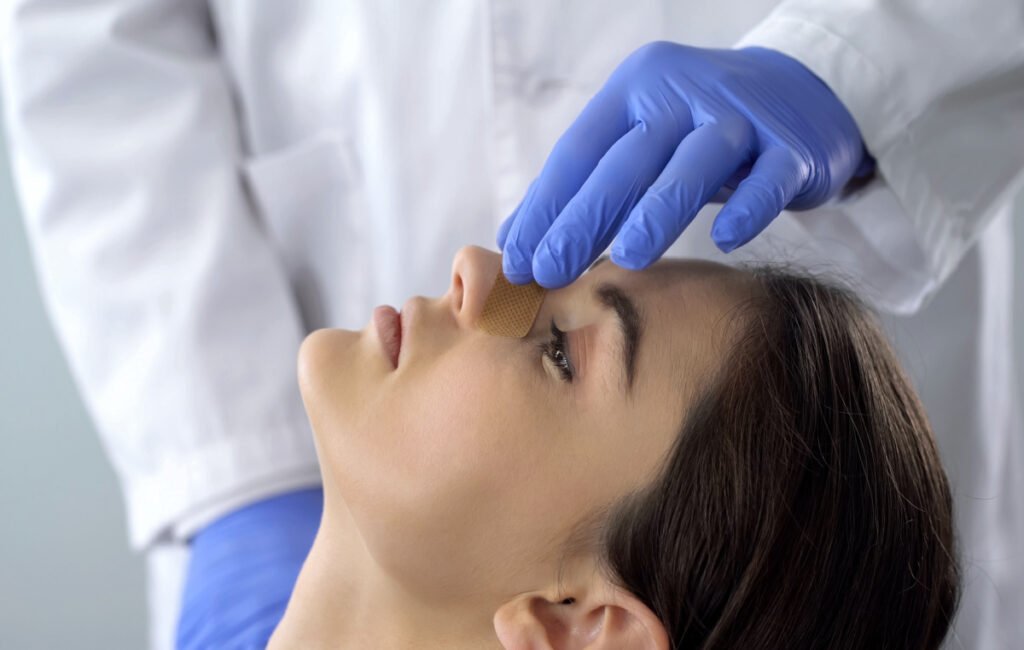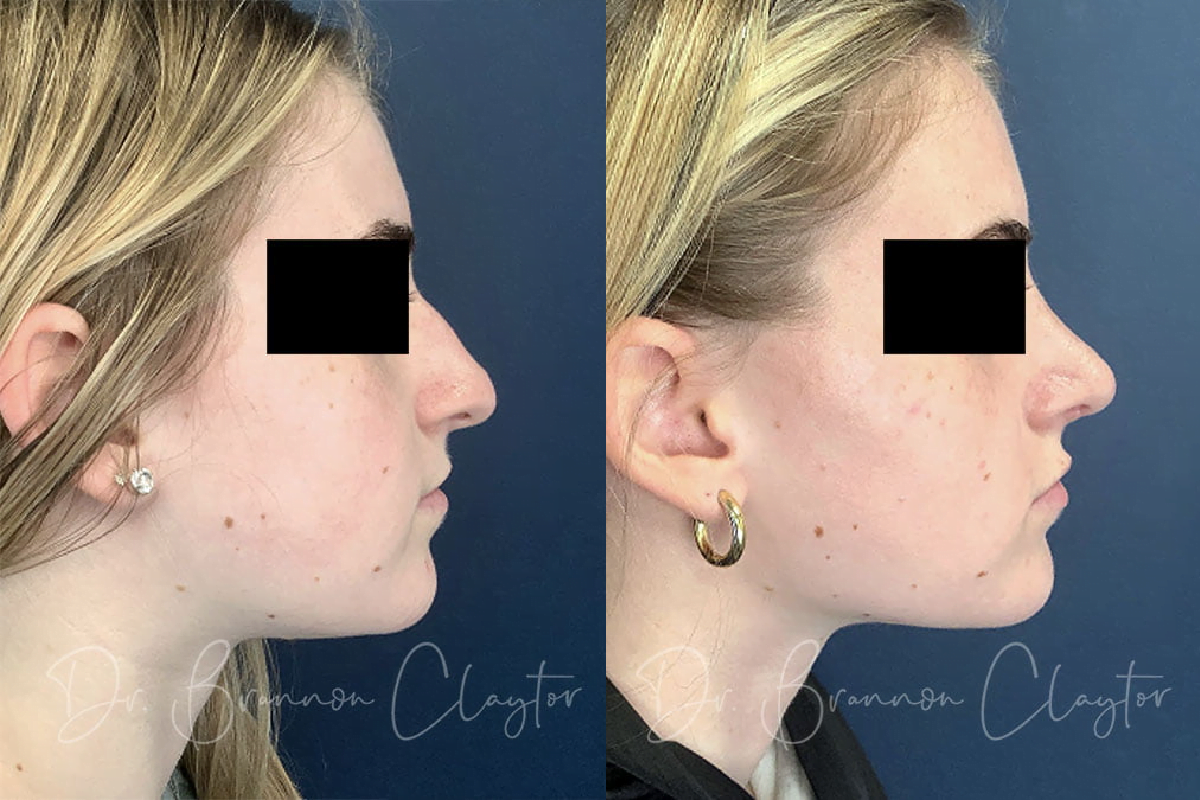Why do I have to wear a splint during rhinoplasty recovery? A board certified plastic surgeon answers your rhinoplasty recovery FAQs.

Adjusting the shape and/or size of your nose has an effect on your entire appearance and presentation. As such, rhinoplasty offers a night-and-day transformation that, for most patients, imparts an exciting boost in confidence. But this transformation does require a surgical recovery period, and it’s important to have clear expectations. Below, board certified plastic surgeon Dr. R. Brannon Claytor answers common questions about recovery after nose reshaping.
Why do I have to wear a splint during rhinoplasty recovery?
You need to wear an internal splint for the first few days after rhinoplasty surgery to support your healing cartilage and bone tissues. This ensures that they remain in the position that your surgeon intended.
After several days, your surgeon will remove splints, along with bandages and nasal packing, and you will get your first look at your developing results. Your nose won’t yet be fully healed, and swelling will still be affecting its shape and size, but you will get a hint of what’s to come as healing progresses.
Many patients feel like their nose is congested after rhinoplasty surgery, and wearing a splint can certainly worsen this. While the recovery period is rarely painful thanks to advanced pain management techniques, it’s important to know that discomfort is normal and to be expected. Plan your ideal recovery space with activities, books, and movies, and be sure you do not have any obligations that will prevent having a restful recovery time. Your body will need to devote much of its energy to the healing process.

Will I have black eyes after rhinoplasty?
Most patients have some amount of bruising beneath their eyes, on either side of the nose, after rhinoplasty. This bruising can look like a “black eye.” Most patients see the majority of bruising and swelling subside after 1-2 weeks, so that they are ready to leave the house to go to restaurants, shop, work, or socialize.
Can I wear glasses or sunglasses after a nose job?
You should not wear glasses or sunglasses for extended periods of time during the first few weeks after surgery. Since glasses rest on your nasal bridge, wearing them is uncomfortable during recovery and could affect your healing process. That said, putting on lightweight reading glasses in short bursts may be okay, with your surgeon’s permission. (For those that cannot function without glasses, we can suggest adaptations based on your needs.)
The exact amount of time before you can regularly wear eyewear again varies from patient to patient, but will probably be no more than 2 weeks after surgery.
When can I work out again after rhinoplasty?
It is unsafe to exercise at your full capacity during the first 4-6 weeks of healing. Strenuous activities can increase your blood pressure to unsafe levels during recovery—this can both affect your health and the integrity of your results (patients who exercise too early often see their nose swell up)! After 3 weeks, however, you may begin to re-incorporate light exercise into your daily routine, gradually increasing to your normal capacity.
Can I do anything to make rhinoplasty swelling go down faster?
The most important thing you can do to facilitate healing (and help the swelling go down) is to follow your board certified plastic surgeon’s pre- and post-operative instructions to the letter. We will provide you with detailed instructions for how to care for yourself after surgery: you will be instructed to rest, place ice packs on your nose in short increments, abstain from smoking, and avoid exercise (among other guidelines). Each of these helps the swelling to go down within a normal time frame.
If you are already following your surgeon’s instructions but hope to boost your post-surgical well-being, there are a few ways to enhance your body’s ability to minimize swelling naturally:
- Eat a healthy diet packed with nutrient-dense foods. A 2018 study shows optimized nutrition is key to healing (and, therefore, your results).
- Eat pineapple or take a bromelain supplement. Found in high amounts in pineapple, bromelain is a natural anti-inflammatory that can help to minimize swelling and bruising.
- Apply arnica-based gels or creams. Be careful to follow your surgeon’s instructions, however, about where and when it is safe to apply creams to your nose.
Expect swelling in your nose to subside top-to-bottom (in the direction of gravity); your nasal tip will be the last area where swelling resolves.
Schedule your rhinoplasty consultation with Dr. Brannon Claytor
Board certified plastic surgeon in Philadelphia Dr. R. Brannon Claytor is here to help you every step of the way, from pre-surgery consultation to questions you have after surgery. He has helped many patients in the Bryn Mawr, Main Line, and Philadelphia area achieve their desired look, as evidenced by his reviews. Learn what Dr. Claytor can do for you by scheduling your consultation online or calling (610) 527-4833 today.
